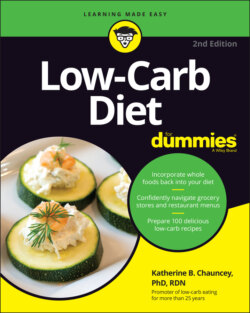Читать книгу Low-Carb Diet For Dummies - Katherine B. Chauncey - Страница 39
Eating larger portion sizes
ОглавлениеA recent study compared the portions of popular foods to USDA and Food and Drug Administration (FDA) standards. The typical cookie is 700 percent larger than the USDA suggested size. Most people eat a single serving of pasta that is 480 percent larger than recommended. And the average muffin exceeds the standard by 333 percent.
Portion sizes in restaurants started to increase in the 1970s, grew dramatically in the 1980s, and currently continue to rise in parallel to increases in average American body weight. Restaurants long ago switched to a 12-inch dinner plate from the standard 10-inch plate. Studies show that Americans ignore portion sizes even when attempting to follow a healthy diet and will eat as much food as they’re given. As a rule, they won’t leave food on their plates. Today Americans eat out in restaurants much more than they used to.
Portion sizes have grown dramatically over the last 50 years. When a popular fast-food chain opened in 1950, it sold only one size of regular fries, containing 200 calories. In 1970, the regular fries were then called “small” and a new “large” fries containing 320 calories appeared on the menu. In 1980, the 320-calorie french fries were called “regular” and a newer “large” fries containing 400 calories appeared on the menu. In 1990, the “large” fries had grown to 450 calories and a new “super-size” fries containing 540 calories appeared on the menu. And in 2000, the 540-calorie fry became “large” and a newer “super-size” French fries containing 610 calories appeared on the menu. Small and regular French fries are nowhere to be found on the menu. You can choose from medium, large, or super-sized. The kid meals come with the 320-calorie-sized fries.
Value meals and super-sized meals are a financial incentive for many eating establishments. They can add large-sized drinks and fries to a meal at minimal cost to them but increased cost to the consumer. So, in terms of nutritional quality, who gets the value from the “value” meal? Not you.
